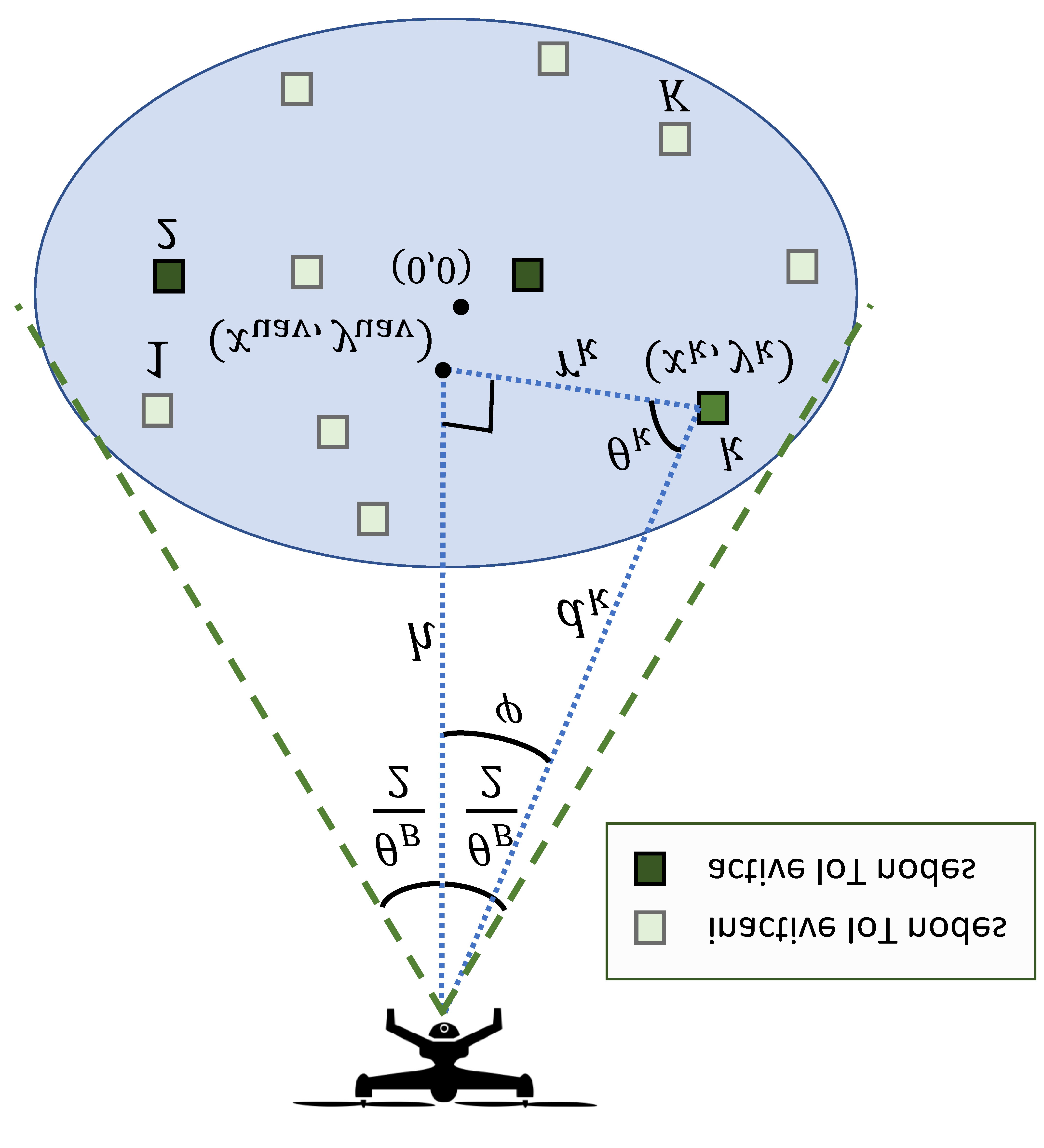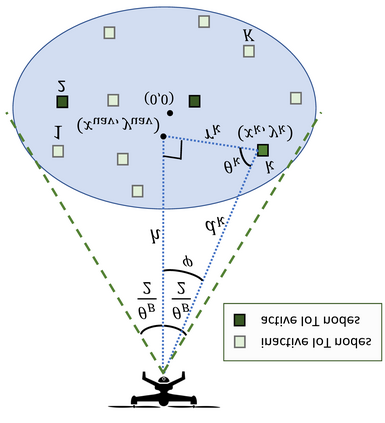The Internet of Things (IoT) brings connectivity to a massive number of devices that demand energy-efficient solutions to deal with limited battery capacities, uplink-dominant traffic, and channel impairments. In this work, we explore the use of Unmanned Aerial Vehicles (UAVs) equipped with configurable antennas as a flexible solution for serving low-power IoT networks. We formulate an optimization problem to set the position and antenna beamwidth of the UAV, and the transmit power of the IoT devices subject to average-Signal-to-average-Interference-plus-Noise Ratio ($\bar{\text{S}}\overline{\text{IN}}\text{R}$) Quality of Service (QoS) constraints. We minimize the worst-case average energy consumption of the latter, thus, targeting the fairest allocation of the energy resources. The problem is non-convex and highly non-linear; therefore, we re-formulate it as a series of three geometric programs that can be solved iteratively. Results reveal the benefits of planning the network compared to a random deployment in terms of reducing the worst-case average energy consumption. Furthermore, we show that the target $\bar{\text{S}}\overline{\text{IN}}\text{R}$ is limited by the number of IoT devices, and highlight the dominant impact of the UAV hovering height when serving wider areas. Our proposed algorithm outperforms other optimization benchmarks in terms of minimizing the average energy consumption at the most energy-demanding IoT device, and convergence time.
翻译:在这项工作中,我们探索使用配备了可配置天线的无人驾驶航空飞行器(UAVs)作为为低功率IOT网络服务的一种灵活解决方案。我们提出了一个优化问题,以设定UAV的位置和天线,以及IOT装置的传输能力,但需以平均信号到平均干涉+噪音基准值为条件。 在这项工作中,我们探索使用配备了可配置天线的可配置天线的不人驾驶飞行器(UAVs),作为为低功率 IOT 网络服务提供灵活解决方案。我们开发了一个优化问题,以设定UAV的方位和天线的宽度;因此,我们将其重新配置为三个可以反复解决的几何测量程序系列。结果显示,规划网络的最大速度值(UAVS)的趋近度值(ULT) 和最差的能源目标值(IAVL), 显示我们平均耗能耗量值的平均值水平(IAVL) 和最差的节能率区域。





